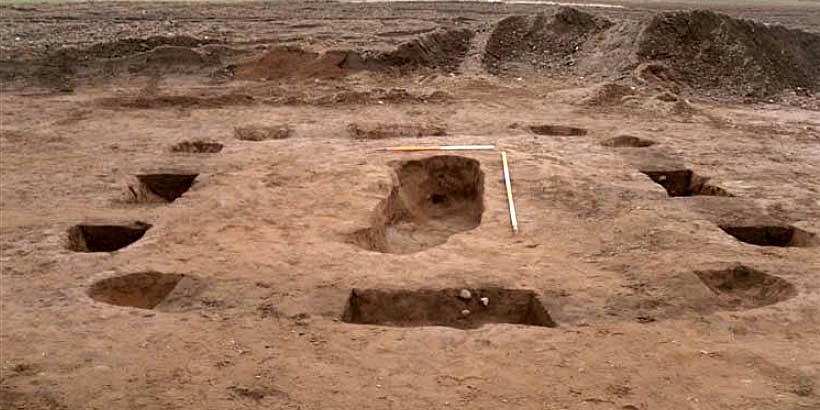Archaeologists have discovered a historic site of national significance beneath the sandy soil of rural Perthshire.
A series of burial mounds have been excavated thought to represent an ancient barrow cemetery at Bankhead of Kinloch near Meigle.
Both the village and the surrounding area of Strathearn have proved a treasure trove of Pictish sites and artefacts over the years.
Despite the increase in the identification of these sites through aerial photography surveys since the 1970s, they are still generally rare and so are of immense significance.
Experts say the Meigle project represents the first complete excavation of a barrow cemetery to date, providing a unique opportunity to comprehensively analyse the monument.
The site was discovered almost by chance, with the AOC Archaeology Group commissioned to undertake an archaeological evaluation in preparation for an agricultural development.
No known sites of archaeological interest were identified within the development area, but with the surrounding area rich in archaeological sites, the owners of Bankhead of Kinloch Farm did not want to take any chances.
That led to the discovery of an important early historic site, comprising two round barrows, a square barrow and a double square barrow. Nothing of the structures themselves remained other than their imprint, but they nonetheless represented an exciting find for the team.
The archaeologists say the features contained very few artefacts, but four of the five graves excavated did contain skeletal material, while one of the excavated pits contained flints and ceramics.
The remains have been removed and efforts are now being made to have them carbon dated.
The archaeology team have yet to establish when the cemetery was built and developed. However, they believe that the cemetery represents an area set aside for burial over centuries.
Such burial sites are common to the Perthshire and known throughout Scotland, but those behind the excavation said the linear barrow cemetery is ”of national significance”.
Excavation of barrow sites are rare, with only three main examples having been excavated north of the Tay since the 1970s.
A fourth, at Forteviot once a Pictish royal centre has been the subject of recent excavation, with archaeologists uncovering an early Bronze Age burial.
The 4,000-year-old chamber is believed to have been the grave of a significant person. It contained a distinctive bronze dagger, together with the first evidence that people in the Bronze Age laid flowers on the graves of loved ones.
Members of the local community will have an opportunity to learn more about the Meigle excavation at public open day on Monday, between 11am and 7pm, at Meigle Village Hall.
